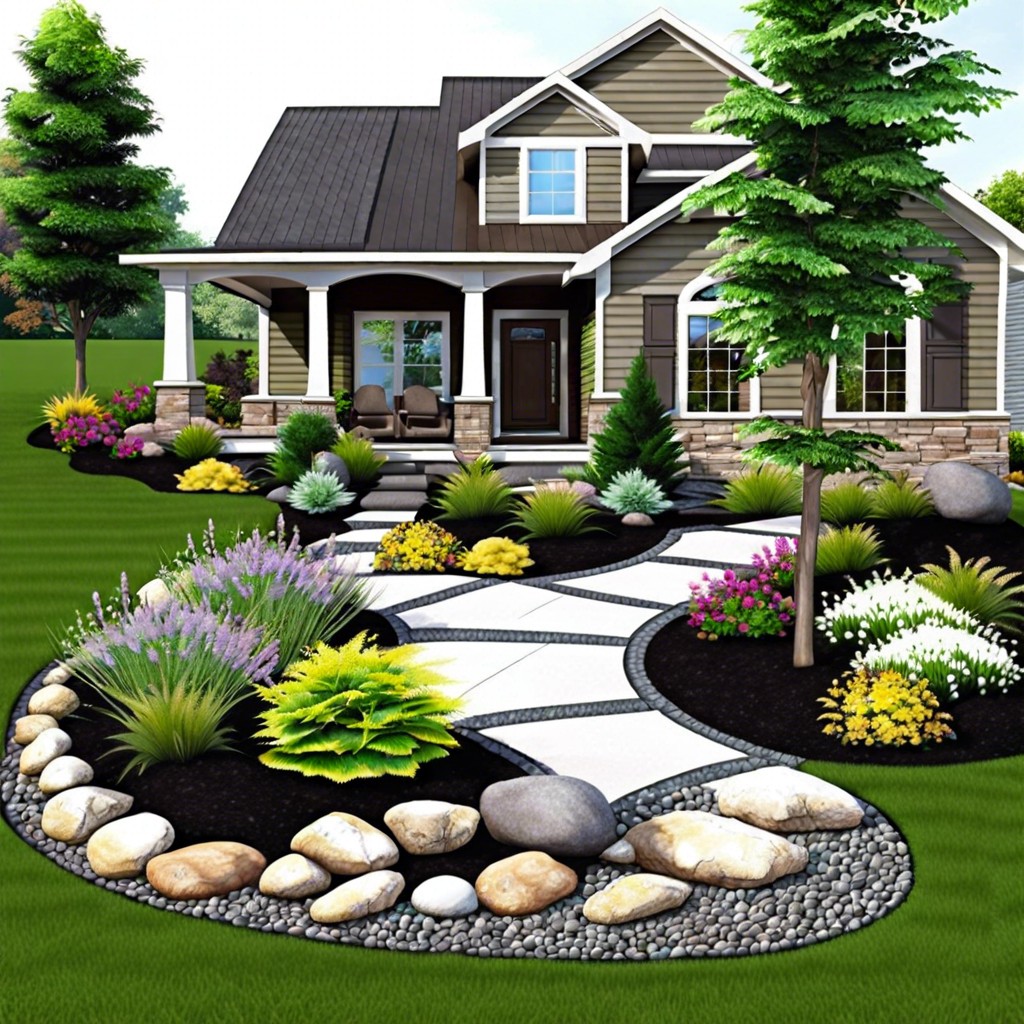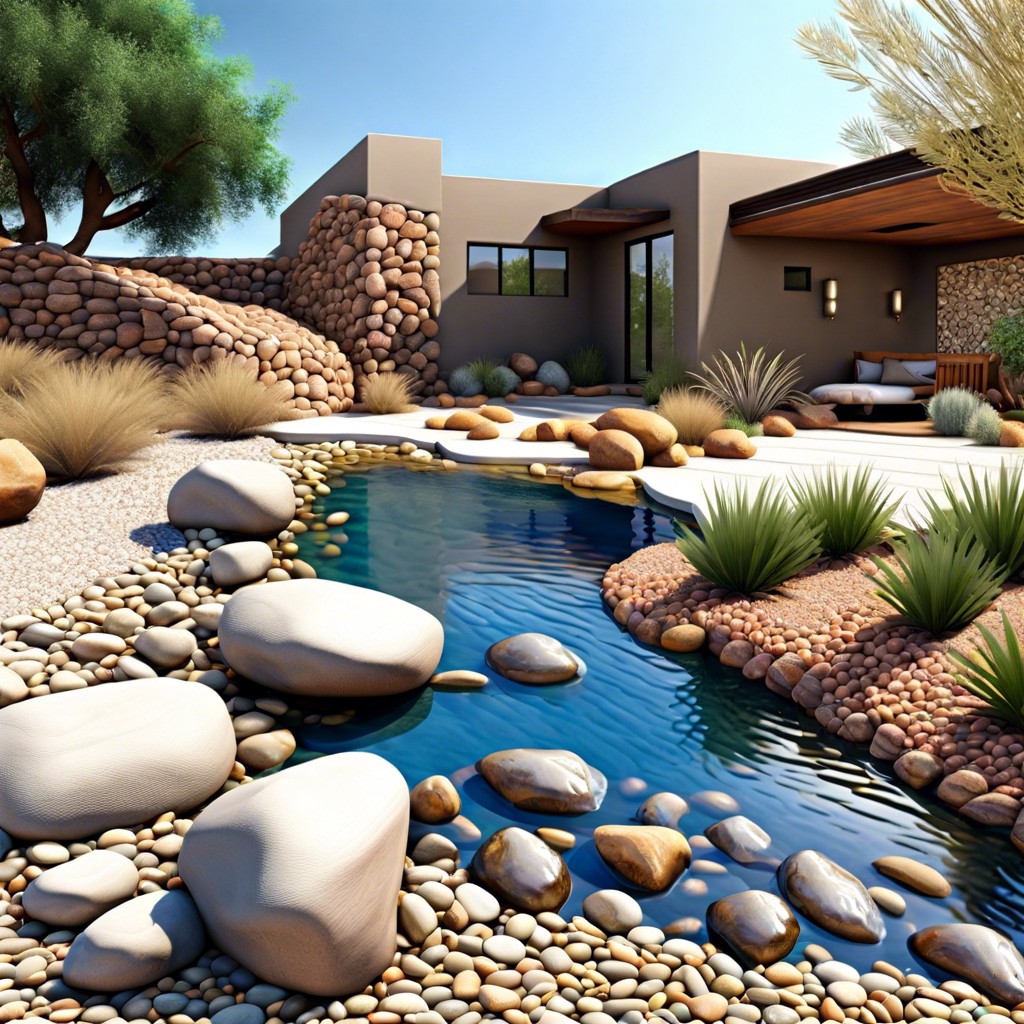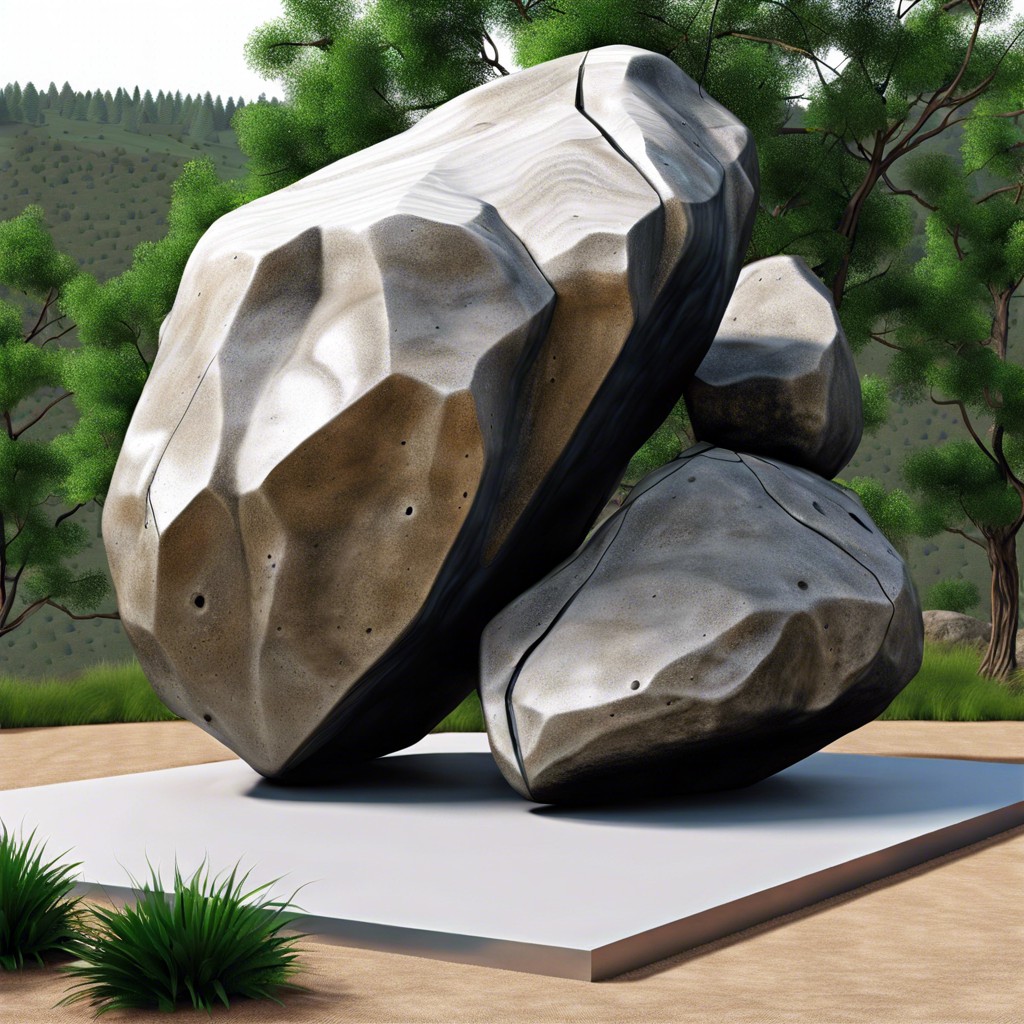Incorporating large rocks into your front yard landscaping can transform your outdoor space into a striking and low-maintenance haven; this article will guide you through the benefits, design ideas, and installation tips for using these natural elements effectively.
Key takeaways:
- Select appropriate large rocks for your front yard.
- Consider size, color, and type of rocks for the best look.
- Place rocks thoughtfully to enhance your outdoor space.
- Create a focal point with a signature boulder.
- Enjoy the advantages of rock landscaping, including durability and water conservation.
Selecting Appropriate Large Rocks for Your Yard

Choosing the right large rocks for your front yard involves considering the size, color, and type of rock that will best complement your home and existing landscape. The scale of the rocks should be in proportion to your home and yard size; too large and they can overwhelm the space, while too small can look out of place.
Think about the color of the rocks. They can either match the existing hues in your home’s façade and hardscaping or provide a contrasting accent to draw the eye and add interest. Native rocks are often a good choice as they naturally fit in with the local environment and can be more cost-effective.
You’ll also want to consider the type of rock. Smooth river rocks provide a different aesthetic and texture compared to rugged, angular boulders. Each rock type has its own character and will contribute uniquely to the overall feel of your landscaping.
Lastly, ensure that the rocks you choose are durable and appropriate for the weather conditions in your area. Some rocks can disintegrate over time if they’re not weather-resistant, so it’s important to select a type that can withstand your local climate.
By carefully considering these points, you’ll create a harmonious and appealing front yard landscape that highlights large rocks as natural, enduring elements in your garden design.
The Art of Boulder Placement in Landscaping
Placing large rocks in your front yard isn’t just about dropping them randomly into the landscape. It’s akin to placing artwork in your home; it requires thoughtfulness and an eye for design. When incorporating boulders, consider these points to make sure they enhance, rather than overpower, your outdoor space:
- Size and Scale:
- Size matters. A rock that’s too large can overwhelm your yard, while one too small might look insignificant. Aim for a scale that complements your yard’s size and existing features.
- Natural Groupings:
- Rocks typically look most authentic in groups. Odd numbers are a golden rule in landscaping, giving a natural asymmetry that’s pleasing to the eye.
- Integration:
- Boulders should appear settled, as though they’ve been there for years. Nestling them into the ground slightly or surrounding them with plantings can achieve this effect.
- Variety:
- Mixing rock shapes and textures adds visual interest. However, keep the types consistent with your region’s geology for a coherent look.
- Balancing:
- Place rocks strategically to balance the landscape. If you’ve got a heavy planting on one side, a well-placed boulder on the opposite side can provide visual equilibrium.
- Accessibility:
- Consider how the placement will affect lawn maintenance. Ensure that rocks don’t obstruct mowing paths or make it difficult to tend nearby plants.
Each of these points is vital in creating a harmonious landscape that feels both deliberate and natural. With the right boulder placement, your front yard can transform into a stunning, sculptural space that complements your home’s architecture and the surrounding natural environment.
Creating a Focal Point With a Signature Boulder
Integrating a signature boulder into your front yard landscape not only establishes a visual anchor but can also reflect your personal style. When choosing your standout stone, consider both size and color—aim for a boulder that’s substantial enough to draw attention, yet harmonious with the overall garden design.
To ensure your boulder doesn’t seem out of place, emulate nature by nestling it into the ground slightly, as opposed to placing it on top of the soil. This creates the illusion that the boulder has existed there for ages, adding authenticity to your landscaping.
Surround your primary rock with complementary elements for a cohesive look. Planting native flowers or low-growing shrubs around it can soften the boulder’s edges and blend it into the surrounding environment, providing a seamless aesthetic.
Keep in mind the practicality of its location. Your boulder should not obstruct pathways or visibility, and it should be set where it can be admired from inside your home or while approaching from the street.
Lastly, lighting can elevate your boulder’s presence, casting dramatic shadows or highlighting its unique features during twilight hours. With thoughtful positioning and the right accents, your boulder will effortlessly become the talking point of your front yard.
Advantages of Rock and Boulder Landscaping
Large rocks and boulders offer a host of benefits when incorporated into front yard landscaping. Their durable nature means they can withstand the elements, from scorching sun to freezing temperatures, without requiring constant maintenance or replacement. This makes them a cost-effective choice over the long term.
In addition to their longevity, these natural elements contribute to water conservation efforts. Rocks do not need irrigation, which translates into a reduced water bill and a positive impact on the environment. The use of large rocks can also prevent soil erosion by providing a stable barrier against wind and water runoff.
Aesthetically, rocks add texture and contrast to your yard. They can break up the monotony of greenery and serve as a natural companion to plants, enhancing the overall beauty of your landscape. With a variety of sizes, shapes, and colors to choose from, rocks can be selected to complement your home’s style and the local environment.
Safety is another benefit. Rocks are fire-resistant, providing a protective zone around your property, which is particularly advantageous in areas prone to wildfires.
Lastly, rocks and boulders are versatile. They can be used to create natural seating areas, support for sloped gardens, or even as a natural playground for children to climb and explore. With their multifaceted advantages, incorporating large rocks into your front yard landscaping is not just a design choice, but a smart and sustainable decision for any homeowner.
DIY or Professional Landscaper For Boulder Placement?
Deciding to handle boulder placement on your own or hire a professional can be a pivotal choice in your landscaping project. If you’re considering the DIY route, it’s essential to assess your capability in handling heavy equipment, as boulder placement often requires machinery such as a bobcat or crane. The process also demands a deep understanding of soil stability and an eye for design balance.
On the other hand, engaging a professional landscaper can bring expertise in selecting the right rocks and placing them in a way that complements your home and yard. Landscapers have the experience to foresee potential challenges and often have access to a wider variety of rock options. They ensure safety standards are met, which can be particularly important in areas visible to the public or on uneven terrain.
Budget can also influence your decision. DIY can be more cost-effective, but unexpected challenges might lead to increased costs. Professionals, while initially more expensive, provide value through their comprehensive service and the time they can save you.
The choice eventually hinges on your personal confidence in tackling large-scale projects, your budget, and the value you place on professional design and installation. Consider your options carefully, and don’t hesitate to consult with a landscaper even if you’re leaning toward the DIY approach—they might offer consultation services that could benefit your project.




